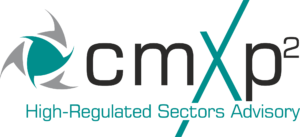Asia’s Life Sciences Sector Challenge:
Strategies For Value-Based Healthcare (VBHC) Marketing
______________________________________________________________________________________________
Abstract
The Asia Pacific region represents a major opportunity for life sciences, with the region’s overall healthcare spending expected to hit USD2-2.3 trillion in 2026. Today, the region accounts for 30% of global pharmaceutical spending. With an estimated 60% of the world’s population residing in the region with significant ageing segments, the region is expected to be an attractive market opportunity for life sciences players.
However, life sciences companies’ traditional market access and marketing approach will not render significant results in today’s market, which is now under severe pricing and payer pressures. With Asia’s rising medical inflation since 2020, governments and insurers are now trying to minimize funding and subsidization. According to Mercer Marsh Benefits, Asia and Southeast Asia have the highest projected medical trend rates in 2025 globally This article provides a high-level perspective of how life sciences companies may achieve success in the Asia Pacific by creating ‘meaningful’ value for the patient and the overall healthcare delivery and payor system.
_________________________________________________________________________________________________
Life Sciences Marketing Across Asia Pacific: Payor Pressures
Across the region, the traditional ‘go-to-market’ strategy for Life Sciences companies (pharma, biotech and medtech) used to be straight-forward – with a focus on improved outcomes, leveraging US and EU clinical data, and market-access via key opinion leader engagement. The traditional model relied heavily upon ‘champion’ specialists to recommend a preferred therapy/treatment and good health care professionals (HCP) relationship building which often translated to market adoption.
Today, the game has changed to become more complex, which has neutered the traditional approach undertaken by companies (i.e. product owner, licensee or manufacturer). The change is driven mostly by greater pricing and payer pressures, with governments and insurers trying to minimize funding and subsidization of more costly treatments and therapies. The more innovative advancements may yield superior outcomes, but often face severe adoption-resistance due to payer pressures. Life sciences companies are now required to ensure they create value for the patient and the overall healthcare delivery and payor system.
The Asia Pacific Opportunity – Significant Yet Complex
According to various market forecasts, the Asia Pacific region represents a major market opportunity for life sciences, with the region’s overall healthcare spending expected to hit between USD2-2.5 trillion in 2026, Today, the region accounts for 25% of global pharmaceutical market. With an estimated 60% of the world’s population residing here and with growing ageing segments, health care expenditures are expected to surge – especially with the projected increases in cancer and non-communicable diseases (NCD). The growing middle-class population and ageing population will fuel NCD, particularly diabetes which often triggers cardio and renal diseases.
However, the Asia Pacific market is fragmented – in terms of funding models, market access and standards of care. A few markets are advanced, while most are emerging, and several are nascent. With significant fragmentation, life sciences companies need to prioritize and customize their market and value creation strategies.
Across China, South and Southeast Asia, managing ‘down’ public healthcare expenditures is a challenging priority amidst a growing middle class, ageing population and rising obesity. This helps explain why these markets are embracing both private and public healthcare funding and delivery models. The meteoric rise of medical inflation and the strong US currency (since 2020) have raised alarm bells to both private and public payors and policy makers. Public and private sector payors now seek to revise down subsidization rates, raise premiums and copayment levels – especially targeting costly and expensive therapies, favoring lower cost alternatives, including biosimilars. In these markets, many innovative therapies may only be accessed in the private sector, especially if the treatments/therapies are not of public pricing levels. Market adoption will be limited as most patients will not be able to afford these newer more effective treatments.
The current landscape places tremendous pressure on companies to generate tangible value – thereby creating value for patients, payors, healthcare providers and regulators. Value creation, in terms of healthcare utilization, is the new paradigm for life sciences companies when launching, positioning and marketing life sciences products and technologies.
Beyond Value, ‘Meaningful’ Value
Beyond improved patient outcomes, companies must ensure the treatment/therapy’s value is meaningful, in that it is significantly beneficial to patients and the various key stakeholders. Such meaningful value propositions need to be factual with real world international and local data, pertinent to the relevant market.
To define meaningful value for each important stakeholder group, the company must detail how the treatment/therapy addresses the specific needs, pressure points and challenges faced by each stakeholder group. Let’s consider some examples:
- Peritoneal dialysis (PD) has been around for more than 50 years – it has a meaningful value proposition, to its patients and relevant audiences. PD works well for a specific set of dialysis patients, especially patients who want to remain active and productive. Patients who are younger or active, especially those studying and/or working, opt to undertake PD in their own homes, whilst they sleep every night. PD enables this whilst hemodialysis (HD) requires patients to visit HD centers every 2-3 days, each session lasting for up to five hours. For PD, the cost-of-therapy savings is significantly cheaper to payors and providers. Against HD, PD is less expensive – especially when one considers the cost of running a HD center as PD is less real estate, human and capital intensive. Often, HD centers may also be at optimal capacity resulting in long waiting times for dialysis patients. With the rising number of dialysis patients in the region, policy makers and payors will view PD as a viable option that ultimately helps patients remain productive and active during the day.
- Clear teeth braces/aligners have revolutionized the dental corrective segment, since 2010. Versus traditional corrective metallic braces which are highly visible and altogether cumbersome, the innovative clear aligners inspire many adults and young people to correct their misaligned teeth. The seemingly invisible corrective braces proposition was meaningful to the target patients, who wanted that perfect smile without traditional ugly metallic braces. On average, the innovative treatment is five months shorter than conventional braces treatment, with almost a third reduction in doctor visits, when compared to traditional braces. As this is largely considered an aesthetic treatment, the company’s strategy is mostly focused on the private healthcare sector, which has been successful.
- Preventive treatment options such as vaccines also offer significant clinical, societal and cost-savings benefits. In the Asia Pacific, especially where there is a significant aging population, pneumococcal vaccines seem to have hit the mark, as the vaccine protects against a range of infections including pneumonia, meningitis, sinus and middle-ear infection – especially for the older age groups. Such condition may be severe and is recognized as one of the major causes of death amongst older patient groups. Such a preventive approach achieves significant savings as patients usually go through multiple rounds of costly treatments/therapies when infected, which may not yield positive outcomes.
‘Meaningful’ Value: Value-Based Care Marketing
The above examples highlight products/therapies that deliver meaningful value to their patients and various stakeholders with a combination of improved outcomes, societal benefits and/or cost-benefit savings.
Here are some key strategies / takeaways for companies
- To be meaningful to target patients and stakeholders – the value proposition must be important, persuasive and enabling or empowering. Beyond clinical evidence, the company needs to define and articulate (backed with data) propositions that address clinical outcomes, overall disease management, payor funding, institutional policies and cost to society.
- Ensure the value proposition for patients focuses on outcomes, disease management, recovery and support. More patients (and their families) are actively researching treatment options, so companies must ensure such information is easily available. Empowering patients with the right information often leads to better patient compliance, which ultimately improves outcomes.
- Use clear, jargon-free language to explain / present the science and benefits of the therapy/treatment in patient information brochures. – Companies need to develop engaging informational content, such as infographics and animated videos. Webinars, counselling and Q&A sessions with experts will help build consumer understanding and trust.
- For patient communication, ensure all literature adheres to guidelines from regulators and is ethical, in that it is transparent about the pros, cons, and limitations of the proposed treatment. Companies need to avoid dubious and misleading claims.
- For payors, regulators and policy makers, companies need to ensure all clinical and financial modelling literature is properly documented, well-written, summarized and presented clearly. The effective visualization of the ‘right’ data sets is often overlooked by companies, who have the appropriate data buried, leaving decision and policy makers to sift through all the information.
- When introducing innovative or breakthrough treatments/therapies that seem to contravene and/or clash with current treatment regimens and payor policies, companies should consider undertaking an advocacy strategy that is aimed at updating and engaging policy makers, with the ultimate objective of policy adjustments. This is a mid to long-term commitment that will help boost adoption and usage of innovative therapies.
Summary
Across Asia’s diverse healthcare markets, managing ‘down’ public healthcare expenditures is in-play. This limits the introduction and critical adoption of more innovative, targeted and effective treatments. As governments and insurers are desperately trying to minimize funding and subsidization, life sciences companies will not be successful with the traditional clinical marketing and ‘key doctor relationships’ approach. To succeed today – especially for newer, innovative treatments and therapies, companies must adopt a ‘value-based’ marketing model for the patients and the overall healthcare delivery system addressing payer, disease management and society considerations.
At cmXp2, our life sciences team helps organizations define and architect strategic marketing, product recall & risk remediation, compliance frameworks, and advocacy & engagement for policy programs. For more information, contact us at info@corpmediapl.com
_____________________________________________________________________________________________________
About the Author
Dennis Susay is a senior partner at Xp2, co-leading the firm’s counsel across two sector – Life Sciences (Pharma, Biotech & Medtech) and Global Banking & Markets and Corporate Professional Services sectors. He has more than 25 years of Asia Pacific and international leadership experience – across marketing, brand, communications and BD with top ranked brands including Bank of America Merrill Lynch, Baxter Healthcare, Yahoo!, Nike and Johnson & Johnson Medical. In the area of Life Sciences communications counsel, Dennis worked for leading global agencies Hill & Knowlton and Porter Novelli, where he headed the regional Life Sciences practice serving multiple mega life sciences brands across pharma, vaccines and medtech. Dennis has valuable medtech start-up experience, where he was part of the cofounding team. Across these sectors, Dennis is well versed in working alongside regulatory, compliance and legal partners.
About cmXp2
cmXp2 (“Xp2”) is a strategy advisory firm dedicated to supporting organizations operating in high-regulated sectors, specifically: Food & Nutrition, Agriculture & Agri-Food/Aquaculture, Life Sciences, and Global Banking & Markets, Institutional & Corporate Banking.
For organizations in these sectors, Xp2 helps them navigate complex and dynamic regulatory, legal and ethical parameters to define and execute strategies that generate meaningful value, shape opinions, enhance reputation and drive market impact. Our senior partners’ deep sector leadership expertise across these high-regulated sectors is well-placed to help clients succeed.
Xp2 is a division of the award-winning Corporate Media Services Pte Ltd (CorpMedia) that has over 32 years of experience. The firm is headquartered in Singapore and serves the Southeast Asia region.

3 Pickering Street | #02-36 Nankin Row | S048660 | Singapore
www.cmXp2.com | www.linkedin.com/company/cmxp2/








